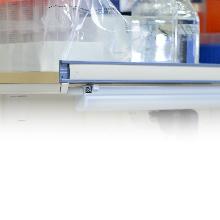Dr. Roi Avraham: Let’s disarm bacteria before they prove too deadly
New scientists

A hundred years after the discovery of penicillin—the wonder drug that has saved countless lives from WWII until today and was the basis for the discovery of other antibiotics—we are losing the battle against bacterial infection.
Resistance is skyrocketing, and even vaccines are failing to prevent previously controllable conditions.
Infectious diseases of all kinds post a myriad of problems, but one of the biggest concerns today is Mycobacterium tuberculosis, the causative agent of tuberculosis. This bacterium is thought to exist in a dormant form in a third of the world’s population. It becomes active in only five percent of carriers, and causes two million deaths per year worldwide. What is more worrying is that in some patients, bacteria have become resistant to many of the antibiotics used to treat this infection, and the fact that this resistance seems to be spreading.
Dr. Roi Avraham, a newly hired scientist in the Department of Biological Regulation, is focused on finding ways to target and treat infectious diseases. Scientists the world over are hard at work at this issue, but the uniqueness of Dr. Avraham’s research is his focus on finding ways to prevent infection at an earlier stage in its development - nipping it in the bud - rather than killing the bacteria themselves.
To that end, he made a crucial discovery during his postdoctoral fellowship that elucidated how bacteria infect healthy cells. With his colleagues at the Eli and Edythe L. Broad Institute of Harvard University and MIT, he examined bacteria that reside inside cells engulfed by large immune system cells called macrophages. During infection, not only do the macrophages fail to destroy these pathogenic bacteria, they actually provide a safe haven in which the bacteria replicate before going on to infect other cells.
What he found was a true battlefield strategy being enacted in the human body: At the earliest stage of infection, bacteria divide-and-conquer their prey, splitting into two sub-populations, one of which is recognized and inhibited by macrophages, while the other is not. This diversionary tactic promotes infection progress; one sub-population sacrifices itself, weakening the host cell population, so that the other can survive.
This new understanding was made possible by a tool commonly used in genetics studies called single-cell RNA analysis, which is usually used to mine genome-wide mRNA expression data from human cell populations, essentially looking at how genes are expressed in the human body. Dr. Avraham’s work is unique in that he developed a technique that allows single-cell resolution of infectious disease, analyzing single human cells as they interact with a single bacterial pathogen.
A cue from cancer research
Dr. Avraham’s approach takes its cue from cancer research with its emphasis on prevention as the best antidote to disease - arresting bacteria before they prove too deadly.
In essence, the finding paves the way to exploring - and potentially preventing - infection at earlier stages, much like an increasingly refined understanding of cancer has led to knowledge of its many stages and the drive to find ways to prevent cancer before it spreads. That parallel is no coincidence: It began to kindle in Dr. Avraham’s mind when he was still a PhD student in the lab of Weizmann Institute cancer researcher Prof. Yossi Yarden in the Department of Biological Regulation.
“In different bacterial sub-populations, the cycle of infection does not progress in the linear way we assumed it did, but rather different bacteria will have different fate. If we want to arrest bacterial growth, we need to look at infection as a series of different phases,” he says. “This has clinical implications because it means that drugs designed to stop a linear infection process may not always work, and there may be different points of the infection process at which new drugs may arrest the infection.”
His approach is one that combines complex genetics, computational analysis of cellular studies, and in vivo experiments. This diverse approach emerged out of a diverse educational career: He studied computer science as an undergraduate and neuro-immunology for his master’s degree, both from Tel Aviv University. And in Prof. Yarden’s lab, he was exposed to new knowledge about the information-relay system involved in cancer metastasis.
Dr. Avraham, who is a recipient of the prestigious Eshkol Fellowship from the Israeli Ministry of Science, says that his expertise in both cancer and infectious disease is reflective of a worldwide trend of closer cooperation among biomedical scientists. “Resistance—whether to antibiotic medications or cancer immunotherapy—is a significant health problem. We are better positioned to find a solution if we face this problem together.”
Dr. Roi Avraham is supported the estate of David Turner, the estate of Leah Arbel, and estate of Mordecai M. Roshwald.

Dr. Roi Avraham








